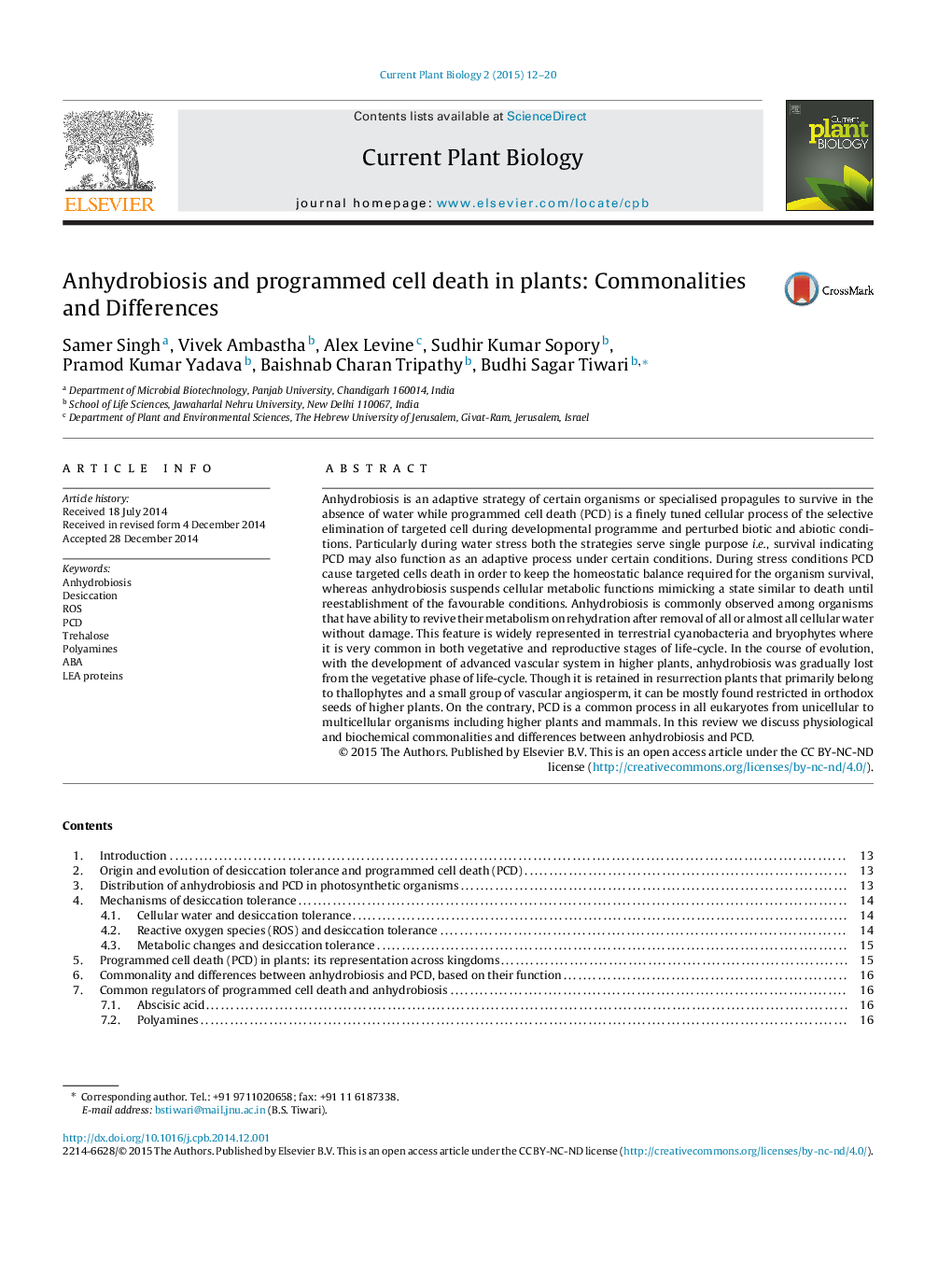| Article ID | Journal | Published Year | Pages | File Type |
|---|---|---|---|---|
| 571827 | Current Plant Biology | 2015 | 9 Pages |
Anhydrobiosis is an adaptive strategy of certain organisms or specialised propagules to survive in the absence of water while programmed cell death (PCD) is a finely tuned cellular process of the selective elimination of targeted cell during developmental programme and perturbed biotic and abiotic conditions. Particularly during water stress both the strategies serve single purpose i.e., survival indicating PCD may also function as an adaptive process under certain conditions. During stress conditions PCD cause targeted cells death in order to keep the homeostatic balance required for the organism survival, whereas anhydrobiosis suspends cellular metabolic functions mimicking a state similar to death until reestablishment of the favourable conditions. Anhydrobiosis is commonly observed among organisms that have ability to revive their metabolism on rehydration after removal of all or almost all cellular water without damage. This feature is widely represented in terrestrial cyanobacteria and bryophytes where it is very common in both vegetative and reproductive stages of life-cycle. In the course of evolution, with the development of advanced vascular system in higher plants, anhydrobiosis was gradually lost from the vegetative phase of life-cycle. Though it is retained in resurrection plants that primarily belong to thallophytes and a small group of vascular angiosperm, it can be mostly found restricted in orthodox seeds of higher plants. On the contrary, PCD is a common process in all eukaryotes from unicellular to multicellular organisms including higher plants and mammals. In this review we discuss physiological and biochemical commonalities and differences between anhydrobiosis and PCD.
